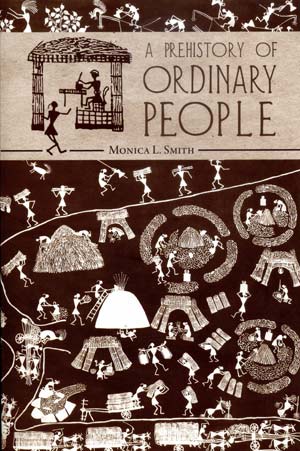
Multitasking isn’t something new to the twenty-first century: our species was designed for it! On the cognitive, linguistic, and social level, humans are highly adapted to doing and thinking about many things at once.
Over a million years ago, our first tool-using ancestors learned to manage their time to address many different types of needs simultaneously, from gathering raw material and fighting off predators to investing in sophisticated communication in the form of language and gestures.
The skills exhibited by our earliest multitasking ancestors eventually made it possible for humans to adapt to many different conditions as they migrated throughout the world. Many cultures subsequently developed elaborate rituals, increased their resource base through the domestication of plants and animals, and gathered together for the construction of monuments.
We have inherited those talents today—that is how we can live in cities and multitask our way through our daily lives.
But multitasking isn’t just about doing many things at once. It’s also the cognitive ability to put down a piece of work and then pick it up again where you left off.
During the interval of not working on something, however, you may have acquired new information that affects how you complete the task. Our species evolved to be uniquely capable of interacting with the world through multiple stops and starts while interweaving new information and techniques for creative purposes.
Looking at the way in which humans have interacted with food, goods, and work over the long span of the past million years, we see how the incremental accumulation of many individuals’ thoughts and activities provided the foundation for larger and larger social groups. Leaders were people who added onto the daily multitasking of individuals, getting their followers to put a little extra work onto their daily routines in order to create monuments and civic architecture.
“Our species evolved to be uniquely capable of interacting with the world through multiple stops and starts while interweaving new information and techniques for creative purposes.”
My interest in writing this book came from my most recent research on ancient urbanism. Cities are only about 6,000 years old, but our patterns of behavior and capacity for interaction with others started long before that. Indeed, our species’ ability to do many things at once, and to cope with interruptions in those workstreams, is evident in the archaeological record starting many thousands of years before the first cities, states, or empires.
A Prehistory of Ordinary People also reflects a broader shift of focus in archaeology. Traditionally, archaeologists have focused on the great and mighty, those who left impressive tombs and temples for us to uncover. Today the focus is more on the daily lives of the people who made those big constructions possible.
Archaeologists now investigate households, villages, and the surrounding landscape to see how the incremental actions of ordinary people changed the world over time. We can utilize the information that we get from even the most humble artifacts and architecture to look at how people deliberately made many choices about the world around them related to everyday activities such as growing food, making artifacts, and engaging with other people.
Those same processes of incremental action are still with us today. Our lives are a constant process of deciding and acting on what we will eat, wear, and work on next. Most of our daily activities, like those of our ancient ancestors, involve food, objects, and work. And like individuals in the past, we each embody our own health, memories, and identity through the use of the physical world around us. The cumulative effects of those individual decisions are evident not only in the notion of prevailing “styles” but also in the idea of shared culture through actions and language.
Our identities are made not only of the things that we do and wear in public, but also in the objects and thoughts that we articulate to ourselves. Much of our understanding of the world is self-contained and self-directed. Our memories are our own, and we remember events and actions slightly differently from others—even if they also were present. Our bodies are our own, and only we truly know our own state of health and wellbeing, about which we make selective comments to others. How often do we really answer the question “how are you?” with a detailed and accurate answer?
Humans also can simultaneously think in multiple time scales including the short-term, the medium-term, and the long-term. People stop and start activities while interleaving their time with other demands. Few tasks, whether making a meal or writing a project report, are done from start to finish without interruptions.
This stop-and-start approach to the world was true even for our long-ago hunting and gathering ancestors, who interwove their activities with many other tasks. Seasonal rounds of hunting and migration would be planned and adjusted on the basis of that day’s information about prey and shelter, with constant interruptions that might range from minor events such as an unexpected discovery of food to major events such as the birth of a baby or the death of a revered community elder.
Today, the reading experience has been expanded to different formats and time frames. So I have divided each chapter into smaller sections that make a particular point about some aspect of food, objects, and energy investment.
Readers who might have a few minutes at the end of the day can dip into this book at nearly any point and encounter a brief, interesting story about the connection between ancient and modern culture.
The themes of the book should enable a reader to make sense of her or his own busy life—there is little about human cognition that is unique to the modern world, and multitasking isn’t a modern curse but something that has been with our species for millennia.
People experience the stop-and-start of multitasking at many different levels and scales of time. Cooking and eating are great examples of multitasking as a sequence of changes in activities and ingredients. In cooking, you might change the menu when you find that you don’t have a particular ingredient, or you might change the cooking method for a particular meal when you’ve been interrupted by a phone call or other unexpected event. Time is a particularly flexible component of the culinary repertoire, and its value is elastic: if you’re very short on time, you might not even heat up those leftovers to eat them; if you’re trying to impress a date with your cooking, you’ll take extra time to make sure that it all turns out just right.
The long term of a lifespan also is a continual series of changes, new information, and discoveries. In the course of your life, you might have interrupted your college education for family reasons or economic reasons, or even simple lack of interest at the time. After some years in the working world, the opportunity to return to formal education might again come up. But now your choice as to which courses to take would not be the same as that of your younger undergraduate days—your focus now would reflect the goals and experiences that you acquired during your time away from school.
A perception of the passage of time isn’t a generic phenomenon but one that is highly individualized. People the world over are not the same from youth to middle age to retirement; they grow, they acquire or lose skills, and they adapt their energy output to their understandings of the value of that investment.
“Our species’ ability to do many things at once, and to cope with interruptions in those workstreams, is evident in the archaeological record starting many thousands of years before the first cities, states, or empires.”
Archaeology isn’t just the study of “old things.” Instead, we can view archaeology as the study of humans over the long term and how they modified their landscapes and used objects to convey belief, community, power, and individual achievements.
For more than a million years, our ancestors multitasked their way through challenging landscapes and increasingly complex social interactions. We are the inheritors of those cognitive and language capacities today—a fact that is worth celebrating as we each engage with our families, friends, and the world around us.


Monica L. Smith is an anthropologist at the University of California, Los Angeles. She conducts research on urbanism and social dynamics through archaeological investigations, and has worked on digs and surveys in Turkey, Tunisia, Egypt, Italy, England, the United States, India, Bangladesh, and Madagascar. Besides A Prehistory of Ordinary People, featured in her Rorotoko interview, she is the editor of The Social Construction of Ancient Cities and author of a number of other books and research articles on ancient civilizations.